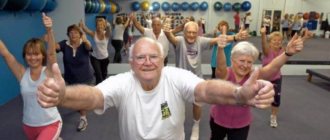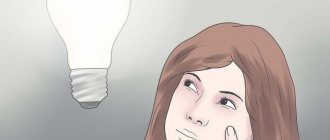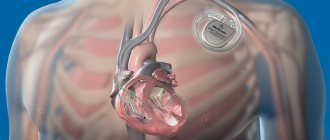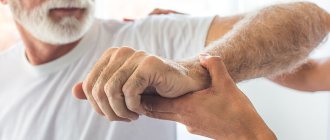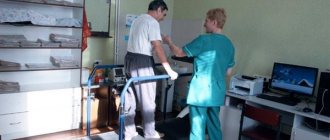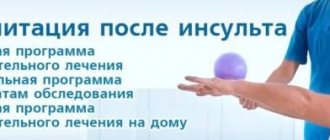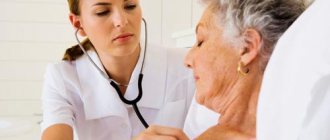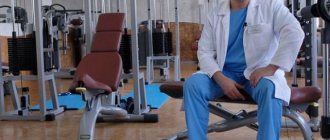Indications
CABG is an operation that is primarily required for patients with severe angina that is resistant to drug therapy. In addition, surgical treatment may be recommended in the absence of symptoms. There is silent myocardial ischemia, which is no less dangerous. It is not felt by the patient, but can be diagnosed using ECG and Holter monitoring.
Indications for CABG can also be determined using coronary angiography. This is an x-ray test in which contrast is injected into the arteries of the heart. The main cause of mortality from coronary disease is atherosclerosis and disruption of the integrity of the atherosclerotic plaque. The blood vessel is torn, and a blood clot forms at the site of damage. It clogs the coronary artery, resulting in myocardial infarction.
Coronary angiography allows you to identify large obstacles to blood flow (atherosclerotic plaques) and assess the risk of acute cardiovascular events. A high degree of coronary artery disease requires cardiac CABG.
Based on the results of coronary angiography, the main indications for CABG are:
- Narrowing of the lumen of any coronary artery by 75% or more
- Reduction in the lumen of the left coronary artery trunk by 50% or more
The location of stenosis (impaired patency) of the coronary arteries is also assessed. The more proximal it is (closer to the heart), the worse the blood supply to the myocardium. CABG surgery on the heart will be most successful if normal blood circulation is observed beyond the narrowing.
Find a specialized clinic
Early postoperative period
Wound care. Typically, postoperative sutures do not require removal, and the wound does not require special care. The doctor may recommend that you treat the wound with brilliant green for several days, in most cases this is enough. However, you need to protect the wound from injury, avoid rubbing the wound with clothing, and avoid hypothermia.
Shower. If sutures are not required or are removed, you can shower. Hot showers are not recommended. The wound is washed with warm water without using a washcloth. After washing, you need to blot the wound area with a towel, do not rub! After the wound has dried, you can treat it with brilliant green.
Mode. During the first month after surgery, a gentle regime is necessary. The wound must heal, and the body “get used” to the new features of the blood supply. Therefore, physical activity, baths, saunas, hypothermia are not recommended, and alcohol intake should be completely avoided.
Medicines. After the operation, you will be prescribed medications. Strictly follow the regimen and dosage. More information about medications will be discussed below.
Contraindications
Coronary artery bypass grafting (CABG) may not be performed on patients even if there are indications for surgery. This may be due to the presence of contraindications. These are diseases and conditions of the body that make surgery too dangerous or unsuccessful.
Main contraindications for cardiac CABG:
- Reduced left ventricular ejection fraction by up to 30%
- Congestive heart failure
- Impaired blood flow in all coronary arteries
- Severe concomitant diseases
In case of circulatory disorders in all coronary arteries, preference is given to laser myocardial revascularization or cell therapy.
How is the operation performed?
The operation can be performed using a heart-lung machine. In addition, in developed countries, including Germany, off-pump CABG is increasingly being used.
The essence of surgery is to create a bypass path for blood flow. For this purpose, shunts are created - additional vessels that leave the aorta and flow into the coronary arteries - beyond the level of narrowing. A person’s own veins or arteries are used as prostheses. This may be the great saphenous vein or the radial artery.
Usually 3 bypasses are created - for the largest coronary arteries:
- Anterior interventricular
- Envelope
- Right
In 20% of patients, 4-8 anastomoses are installed. More preferable is CABG (coronary artery bypass grafting) on a beating heart.
The advantages are as follows:
- Blood cells are not damaged
- Rehabilitation after CABG is faster
- The operation has a shorter duration
In this case, complications after CABG on the heart are less common. Because there is no risk from those that are directly related to the use of a heart-lung machine. This is pulmonary edema, embolic damage to the blood vessels of the brain or kidneys, hypoxia (oxygen starvation) of internal organs.
Rehabilitation after CABG at home
Recovery takes on average six weeks. Depending on the individual characteristics of the patient’s body and other third-party factors, the period can range from four to twelve weeks. Much depends on strictly following the recommendations of doctors. Upon discharge from the Assuta clinic, the patient is handed over to an accompanying person, with whom the doctor first talks about caring for the patient. Personnel from the rehabilitation center can also accompany the patient if an appropriate agreement has been drawn up. A specially trained nurse provides care, adheres to the schedule for taking medications and attending specialized procedures.
Strict control requires a chest incision, which must be monitored in order to timely record symptoms of infection when they appear. You should be alert to a feverish state, rapid heartbeat, increased bleeding from the wound, intense pain that does not go away after taking painkillers. Previously, the cardiologist talks with the patient’s companion, warns him about crisis moments, which he must immediately report to the attending physician.
It is important to take care of the incision in the chest area and the wound where the vessel was removed for bypass surgery. The incision can be extensive or minimal if the bypass is performed in a minimally invasive way using punctures in the chest. CABG rehabilitation includes the following recommendations for incision care:
- You cannot swim, visit the pool, or take a hot shower for the first few weeks. Let's take a warm shower, but avoid direct contact of the jet under pressure into the wound area. The incision should be treated delicately with mild soap and water, and then blot the wound with a dry, moisture-absorbing towel. Permission to take water procedures is given by a doctor.
- Do not use lotions, oils, or powders when treating wounds. The doctor prescribes an antiseptic.
- Avoid sudden movements and excessive loads that can lead to separation of the edges of the wound. It is necessary to use a bandage after CABG to prevent careless movements from worsening the incision.
- Itching, mild burning, numbness or tingling sensations are acceptable during recovery.
- A special silicone-based gel will improve the appearance of the scar and give it a cosmetic effect. You cannot purchase the product yourself; permission to use is issued by a doctor.
- It is worth consulting with a cardiologist about the use of sunscreens and other products that protect the scar from exposure to intense sunlight during the summer season.
It is important to follow the recommendations after CABG for the leg where the vein was removed so that the wound heals faster and does not leave a mark. You will need compression stockings and washing the wound with warm water and soap. The legs should be kept elevated more often to reduce swelling. Wounds in diabetic patients are especially difficult to heal. Doctors' recommendations should be carefully followed to shorten the recovery period.
If you have any doubts about taking medications, you should not stop treatment after CABG on your own. It is important to discuss this issue with your doctor, otherwise there is a high risk of complications. The cardiologist will determine the period after which you can return to your normal lifestyle. For people with intellectual work, the rehabilitation period is shorter than for representatives of professions that require the use of physical force.
Recovery after coronary artery bypass surgery
Immediately after surgery, the patient is on artificial ventilation for a certain time. And after natural breathing is restored, prevention of congestion is required. To do this, the patient is asked to inflate rubber balls several dozen times a day. As a result, the lungs expand.
Recovery from open-heart CABG involves caring for the surgical wound. The incision is made down the middle of the sternum. In addition, there is damage to the lower extremities - where the doctor took the material for bypass (the great saphenous vein). Skin wounds heal in 1-2 weeks. After this, the person is allowed to wash in the shower.
Banding after CABG is not mandatory, but is preferred to reduce the risk of sternal suture dehiscence. While skin heals in an average of 10 days, bone heals over several months. Patients often ask how long to wear a bandage after CABG. It is usually used for 4-6 months.
There should be no arrhythmia after CABG. If it occurs, it is not a consequence of the operation. There are a large number of arrhythmias. Some may be caused by myocardial ischemia, others by independent pathologies, and still others by previous myocardial infarction. Typically, the heart rhythm normalizes after surgery due to improved blood supply to the heart muscle.
The consequences of CABG surgery are assessed 2-3 months after it is performed. By this time, angina should no longer bother the patient. The person is given a stress test and IVF is removed to understand how much the blood supply to the myocardium has improved. If there is no pain after CABG during physical activity, the operation is considered successful.
Recovery after CABG can be carried out in a clinic, in a sanatorium or at home. Naturally, the most successful rehabilitation will be under the guidance of a specialist. But some patients undergo rehabilitation after CABG at home, which is usually associated with a desire to save money. If there is no money for quality restoration, you need to take care of yourself. Exercise after CABG surgery is very important. You need to start with walking - at least 1 kilometer a day. Then - gradually increase the load.
Patients often ask when they can sleep on their side after CABG. You can lie on your side almost immediately, if that’s comfortable for you. Most doctors do not prohibit this from happening to their patients, since sleeping on the side does not affect the results of the operation.
Find a specialized clinic
Breathing exercises
This type of physical education is quite important in the healing process after surgery. Breathing exercises, as a type of health therapy, help normalize metabolic processes in the heart, which brings sufficient saturation of the blood with oxygen and leads to the fastest healing. In addition, therapeutic breathing movements stabilize the electrolytic balance of the heart and help normalize the rhythm.
Breathing exercises can be performed both in a supine position, when a person is in the early postoperative period, and in a standing position, in a later period.
The main tasks for performing breathing exercises after surgery include:
- close your right nostril with your finger, take a maximum inhalation through your left nostril, then close your left nostril and make a gradual, full exhalation through your right nostril; repeat the exercise in reverse order;
- if it is possible to raise your limbs: slowly raise both arms up, while taking a deep breath, then gradually lower your arms, quietly exhaling air; repeat the exercise 5-7 times;
- lying on your back, take a deep breath and hold your breath for a few seconds, then exhale slowly; repeat this task 5-7 times;
- lying on your back, legs straight, arms along the body; slowly take a deep breath and bend your legs at the knee joints, performing a sliding movement with your feet, then exhale deeply, at this time taking the original position of the torso; repeat the task 5-10 times.
If during breathing exercises the patient feels dizziness or nausea, or blurred vision, the exercise should be stopped. If the exercise goes well, then the set of exercises will help the heart return to normal quickly after surgery, as well as restore normal blood flow and oxygen exchange in the tissues.
Life after CABG on the heart
After CABG, a person’s life changes only for the better. Full recovery takes about 6 months. During this time, the sternum grows together and tolerance to physical activity increases. Disability after CABG is not issued. Moreover, disability after CABG can be removed if you become able-bodied again. And if the operation is successful and there is no concomitant pathology, this will happen.
Several important questions that patients often ask regarding lifestyle after surgery:
- Showering - allowed 10 days after surgery (plus or minus 2 days) if the skin wound has healed
- A bath after cardiac CABG is allowed after 2-3 months, when you undergo a follow-up examination (because temperature changes can provoke spasm of the coronary arteries and an attack of angina)
- Alcohol after CABG is allowed in moderation after the early postoperative recovery period
- Smoking is prohibited because it leads to narrowing of the coronary vessels and increases the risk of atherosclerotic damage.
- Gymnastics after CABG - carried out under the guidance of a specialist in physical therapy, required to strengthen the heart muscle and improve tolerance to physical activity
- Diet after coronary artery bypass grafting is desirable, but not mandatory (you can reduce the consumption of animal fats to reduce the risk of atherosclerotic plaques in places where they do not yet exist)
Having surgery does not guarantee that you will not have angina or myocardial infarction in the future. Because CABG only allows you to bypass narrowed areas of blood vessels. But after a few years, new atherosclerotic plaques may appear. Therefore, it is important to adhere to a healthy lifestyle and take medications prescribed by your doctor.
Physical exercise
Therapeutic gymnastics after bypass surgery is carried out both in the postoperative period, when the patient is in bed, and during the period of normalization of the body systems and restoration of the patient’s ability to get up.
An approximate set of exercises in a supine position:
Exercise therapy must be carried out in loose clothing that does not restrict breathing and movement. For best results, do 2-3 approaches throughout the day. Physical exercises should begin with the simplest tasks for the patient, gradually increasing the load as the muscles warm up.
- perform flexion and extension of the feet, 5-10 times for each leg;
- flexion and extension of the hands, 50-10 approaches for each;
- perform flexion and extension movements of the arms in the elbow joints, while touching the shoulders with the hands; perform 5-10 times.
- take a deep, slow breath in and out, raising your arms perpendicular to your body;
- bend your leg at the knee and then slowly lower it to its original position; repeat the exercise for the second leg. 5-10 reps.
- lying on your back, place your hands with your palms up, then take a slow breath and straighten your arms in different directions, simultaneously turning your feet outward, then return to the starting position, while exhaling deeply;
- move your legs bent at the knees randomly in different directions for 1-2 minutes;
- raise your hand and touch it to the leg bent at the knee, located on the same side of the body, then take the usual position; repeat the task for the second half of the body; quantity – 5-10 times for each half;
- lie down straight; As you inhale, stretch your arms in both directions, while turning your head to the right side, and as you exhale, return to the starting position. Next, complete the task by turning your head to the left; perform the movement 4-6 times;
- clench your hands into a fist and make quick circular movements with both hands for 30 seconds;
- bend your knees; carry out voluntary extension of the limbs at a free pace; execution time 30-60 seconds;
- tighten your gluteal muscles, then relax; repeat 5-10 times.
Exercises while sitting
These physical movements should be performed in parallel with breathing exercises. The lesson includes:
- Press your arms bent at the elbow joints to your shoulder, then smoothly spread your elbows in different directions, while taking a deep breath; gradually lowering your hands, exhale; repeat 5-10 times.
- Make circular movements with your arms, slowly raising and lowering them, perform the exercise for 30 seconds.
- Perform a circular movement of your arms, then hold your hands on your knees; make a gradual tilt of the torso towards the knees, then slowly take the starting position; repeat 4-5 times.
- Alternately raise your shoulders to your head, then lower them, do the exercise for 30 seconds.
- Gradually bend your leg and bring your knee to your chin, inhaling, then straighten it, exhaling; repeat 4-5 movements for each leg.
The main goal of therapeutic exercises is a targeted action on the restoration of the body. It is important to remember that all movements should be performed at a quiet pace and should not cause the patient a feeling of discomfort or heaviness. Only full and regular training with a gradual increase in load will have a positive effect and will contribute to adequate medical therapy.
Where is the best place to do CABG?
Coronary artery bypass surgery is performed all over the world. Many residents of the CIS undergo CABG in Moscow. Often, residents of developing countries seek to travel abroad for surgery. Because it is very dangerous and requires a long recovery. A better-quality operation provides better treatment results and a less painful rehabilitation period.
Residents of many countries go to the States for CABG surgery. The medicine there is really high quality, but very expensive. It is cheaper to do CABG in Israel. We recommend Germany. This is the “golden mean” - German clinics are able to provide the same high quality of medical services as the United States, but it is easier to come here for treatment, and the services of doctors are cheaper.
The main advantages of coronary artery bypass surgery in Germany:
- Surgery is performed on a beating heart if possible given the clinical situation
- The best doctors work in Germany - they come here from all over the world to practice medicine. And when performing CABG, the qualifications of the cardiac surgeon play a significant role
- German clinics are equipped with the latest technology
- After the operation, the person is provided with high-quality care and medicinal support, which improves the tolerability of the early postoperative period
- The opportunity to undergo high-quality rehabilitation, which will return a person to his former lifestyle and restore his ability to work
Safe and effective aortic surgery can be performed at the Helios Klinik Krefeld, a medical center of maximum care, continuously collaborating with leading universities and research centers around the world. The Department of Adult and Pediatric Cardiac Surgery, under the direction of Prof. Dr. med. Jürgen Ennker, has a number of its own developments in the field of surgical interventions on the thoracic and abdominal aorta. These are coronary artery bypass grafting using minimal extracorporeal circulation (a special heart-lung machine is used), coronary artery bypass grafting on a beating heart, and minimally invasive direct coronary artery bypass grafting. The department also uses hybrid endoprostheses of the thoracic and abdominal aorta, and performs classical reconstructive interventions with the installation of self-expanding stents. At the same time, the department’s specialists perform both primary and more complex revision interventions on patients of all ages.
Treatment in Germany can be organized for you by ]Booking Health[/anchor]. We have been working in the medical tourism market for a long time, so we can choose the best clinic for you. You will be treated by the most reputable German specialists.
Thanks to our help, you can save up to 70% of the total costs of treatment and its organization. We have direct contracts with all major clinics in Germany. For treatment you do not have to take out insurance for foreign patients. You will receive Booking Health insurance, which will cover all unexpected medical expenses during the treatment period and for 4 years after it.
Contact Booking Health
Can I smoke after mitral valve replacement?
We were sent a question: “Can I smoke after replacing the mitral valve?” X-ray endovascular surgeon Firdavs Bakhodurovich Shukurov answers it.
“Smoking is harmful to your health” - this phrase is regularly heard by everyone, young and old. This is not based on nothing. And smoking causes particular harm to people suffering from pathologies of the cardiovascular system and respiratory organs.
Tobacco smokers are at a significantly higher risk of postoperative complications than nonsmokers, including impaired heart and lung function and delayed wound healing. According to a joint study conducted by the World Health Organization, the University of Newcastle (Australia) and the World Federation of Societies of Anesthesiology, smokers who quit smoking approximately 4 weeks before heart surgery had a lower risk of complications and better results from the intervention 6 months after treatment.
Nicotine and carbon monoxide present in cigarettes can reduce oxygen levels in the blood and significantly increase the risk of cardiac complications after surgery. Smoking tobacco also damages the lungs, increasing the risk of post-operative respiratory complications. Smoking reduces the patient's immunity and can slow healing, increasing the risk of infection at the surgical suture site.
In another study published in the Journal of the American College of Cardiology, researchers found that continuing to smoke after heart surgery significantly increased the risk of complications (this study compared the results of coronary artery bypass graft surgery and coronary artery stenting). Patients who continued to smoke had almost twice the risk of heart attack, stroke and death compared with those who did not smoke or quit smoking after surgery.
The conclusion of this study is that smoking is always harmful to health and increases the risk of complications. Patients undergoing CABG or PCI should be advised to quit smoking before the procedure, as this can significantly reduce the risk of heart attack, stroke and even death. Quitting smoking is one of the most effective ways to improve health, even in patients who have already been diagnosed with cardiovascular disease.
There are factors that increase the risk of heart attack and stroke that we cannot control, such as age and genetics. However, smoking is a risk factor that can be influenced. There is no doubt that stopping this bad habit, even after undergoing heart surgery, can go a long way in reducing the risk of complications.”
The Center for Tobacco Prevention and Control of the National Medical Research Center for Therapeutic and Preventive Medicine will help you quit your smoking habit. Sign up for a consultation with a Center specialist by phone: +7(495)790-71-72
